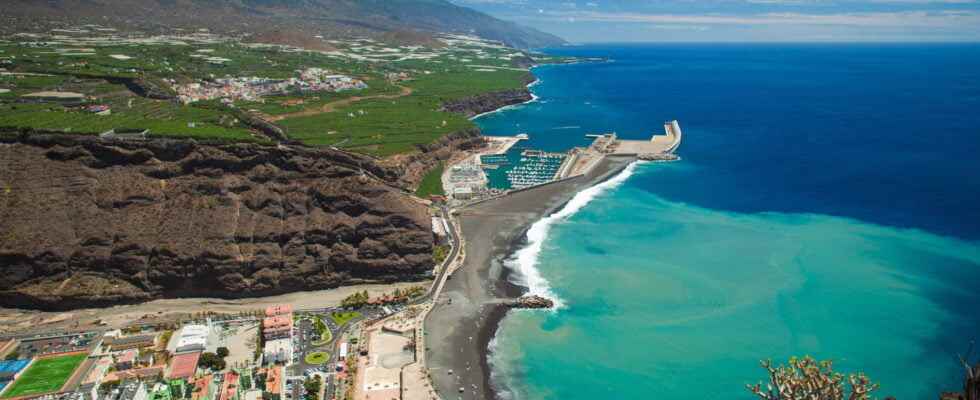The Canary Islands are one of the most popular tourist destinations in Europe. But what are the conditions for going on vacation to the Canaries this winter in the face of Covid-19?
[Mis à jour le 5 décembre 2021 à 18h59] It is again possible to travel to Canary Islands. This is good news for people who plan to go on vacation this winter, especially since Spain is one of the preferred destinations for the French. However, several health measures have been put in place to welcome tourists in the best possible conditions. In order to limit the spread of the virus, border controls have been tightened and a health control form (FCS) must be completed and signed by all travelers. Entry conditions, PCR test, vaccine, open places, beaches, we take stock of the situation in the Canaries for your winter vacation.
Border controls to go to the Canaries depend above all on the country of origin. Thus, tourists from a low-risk area are subject to a health check at the airport, consisting of a visual check (absence of symptoms) and a temperature measurement. The latter must not exceed 37.5 ° under penalty of reinforced secondary controls. Tourists coming from a high-risk area must, in addition to complying with a visual check and a temperature measurement, present a document certifying either a vaccination, or a negative test of less than 48 hours, or a certificate confirming recent recovery from Covid-19.
Many countries around the world require their visitors to undergo quarantine upon arrival. This quarantine generally takes place in a hotel room, from where travelers are not allowed to go out for a period of time that can range from three to fifteen days depending on the country. Good news for tourists planning to go on vacation to the Canaries, the archipelago does not impose any quarantine on its visitors from all over Europe. Travelers from India must carry out a ten-day quarantine, a period reported to seven days if the test carried out three days after arrival proves negative.
In order to limit the spread of the virus, many countries around the world impose a quarantine on their citizens when they leave and then return to their countries. In France, the setting up of a quarantine on return from a trip or a trip abroad is conditional on the destination. When a French resident returns from a high-risk area, he must respect a quarantine of 10 days, unless he has a complete vaccination certificate. However, this measure does not apply to the Canaries, a destination for which no quarantine is necessary either on the outward or return journey.
Numerous studies have shown that contagiousness increases when the gatherings take place late at night, while barrier gestures and wearing a mask are less respected than during the day. This is the reason why many countries of the world have taken the decision to institute a curfew, that is to say a time during which the population is no longer allowed to leave their homes, except in case of compelling reason. The Canaries are also affected by the curfew, the time of which varies according to the islands. The curfew is from midnight to 6 a.m. in Fuerteventura, from 11 p.m. to 6 a.m. in Tenerife and Gran Canaria, and from 10 p.m. to 6 a.m. in Lanzarote.
Because different regions of the same country may experience different health situations, travel restriction measures have been implemented in many areas. These measures are intended to limit the circulation of the virus throughout the national territory, and to isolate the clusters as much as possible. In the heart of the pandemic, connections between the different Canary Islands have for the most part been suspended. Today, they have been restored, and daily journeys by plane or boat make it easy to connect one island to another. This is good news, especially since moving from island to island is one of the greatest attractions of the Canaries.
Some islands like Tenerife or Lanzarote are more severely affected by the virus than others like Gran Canaria or Fuerteventura. This is the reason why the local authorities have decided to keep certain places closed. In Tenerife, La Graciosa and Lanzarote, bars and restaurants are limited to 4 people per table and close at 11 p.m. Sports facilities are open to groups of up to 4 people, markets are closed, and popular events and nightlife are canceled. On the other islands of the archipelago, open air markets remain open, public transport operates normally, and sports facilities are open to groups of up to 6 people.
At the height of the pandemic, some beaches were completely closed to the public in order to curb the spread of the virus. The latter are gradually opening again, to the delight of holidaymakers. On all of the Canary Islands, the beaches remain open to the public, but security measures remain strict. Wearing a mask is mandatory to access the beach and move from one place to another, and each group is advised to leave a distance of four meters between them. In addition, some municipalities also plan to prohibit access to a beach when it is already very busy. On the beach, it is possible to remove your mask only when you are sitting or swimming.
All Spanish airports are open again, and the Canaries are no exception. For this winter, the airlines that usually fly to the Canaries should continue their services. In particular, it will be possible to take an Iberia, Ryanair, Easyjet, Vueling Airlines or even Volotea plane. Air France has also stepped up its program for flights to the Canaries. For inter-island journeys, the Canaryfly and Binter companies provide the usual air connections. However, care must be taken to comply with health instructions throughout the plane journey, namely wearing a mask without interruption as well as the necessary social distancing.
